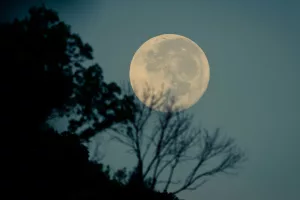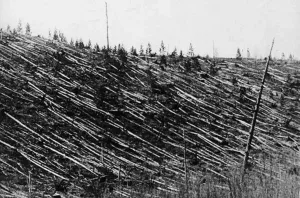High tides are primarily caused by the gravitational forces exerted by the moon and the sun on Earth. The moon’s gravitational pull causes the water to bulge towards the moon, creating a high tide. This phenomenon is a result of the gravitational attraction between the Earth and the moon, leading to the water on the side of the Earth facing the moon being pulled towards it. Conversely, on the opposite side of the Earth, there is also a high tide due to the centrifugal force created by the Earth-moon system’s rotation. As a result, there are two high tides and two low tides approximately every 24 hours. When the sun, Earth, and moon are aligned, during a full moon or new moon phase, the gravitational forces combine, leading to higher high tides, known as spring tides. These occur because the gravitational pull of the sun reinforces that of the moon, producing the greatest difference between high and low tides. Spring tides are characterized by more extreme tidal ranges, with higher high tides and lower low tides. The alignment of the sun, Earth, and moon during spring tides creates a stronger gravitational pull on the Earth’s oceans, resulting in the increased height of high tides during this period.
The Science Behind Tidal Cycles
Understanding the cyclical nature of tides involves delving into the intricate dance between celestial bodies. The Earth’s rotation, the moon’s orbit, and the sun’s gravitational influence all play pivotal roles. The Earth rotates once approximately every 24 hours, allowing most coastal areas to experience two high tides and two low tides each day. This cycle is not just a simple back-and-forth motion but a complex interaction of gravitational forces and the Earth’s topography.
Semidiurnal, Diurnal, and Mixed Tides
Coastal regions around the world experience different tidal patterns. Most coastlines have semidiurnal tides, meaning they experience two high and two low tides of about the same height each day. However, some areas, like the Gulf of Mexico, experience diurnal tides, with one high tide and one low tide each day. Mixed tides, which occur along the Pacific coast of North America, involve two high and two low tides of different heights each day. These variations are influenced by geographical features and the ocean basin’s shape.
Low Tides and Gravitational Effects
Low tides occur in areas where the water is being pulled away from the shore due to the gravitational force of the moon and the sun. During the first and third quarters of the moon, when the sun and moon are at right angles to each other, the gravitational forces partially cancel out, resulting in lower high tides, known as neap tides. Neap tides are characterized by less extreme tidal ranges compared to spring tides. The gravitational effects of the sun and moon on the Earth’s oceans result in a cyclical pattern of tides, with two high tides and two low tides occurring daily.
Understanding Neap Tides
Neap tides occur when the gravitational forces of the sun and moon negate each other to a certain extent, resulting in decreased tidal range. This phenomenon is a direct consequence of the gravitational interaction between these celestial bodies and the Earth’s oceans, leading to variations in tidal heights depending on the relative positions of the sun, moon, and Earth. During neap tides, coastal ecosystems such as marshes and tidal flats might experience less drastic changes in water levels, which can influence local wildlife and plant life.
Other Factors Affecting Tides
While gravitational forces play a primary role in the formation of tides, other factors such as the shape of coastlines, underwater topography, and ocean currents can also influence the height and timing of tides.
Coastal Configuration and Its Impact
The configuration of coastal areas and the presence of features such as bays, estuaries, and inlets can amplify or dampen the effects of tidal forces, leading to variations in tidal behavior along different shorelines. For instance, the Bay of Fundy in Canada is famous for having the highest tidal range in the world, primarily due to its unique funnel shape that amplifies tidal forces.
Seabed Topography
The topography of the seabed, including the presence of continental shelves, can affect the speed and direction of tidal currents, further influencing the movement of water masses. Narrowing channels can accelerate tidal currents, while wide continental shelves may slow them down, impacting the local tidal range.
Ocean Currents and Their Role
Additionally, ocean currents, driven by factors such as wind patterns and temperature gradients, can interact with tidal forces to create complex and dynamic coastal environments. For example, the Gulf Stream in the Atlantic Ocean can influence tidal patterns along the eastern coast of the United States by altering the flow of water masses, sometimes enhancing or diminishing tidal effects.
Astronomical Influences
The distance of the moon from Earth and the tilt of the Earth’s axis also contribute to variations in tidal patterns. The moon’s elliptical orbit around Earth results in fluctuations in its distance from our planet, impacting the strength of its gravitational pull on the oceans.
Perigee and Apogee Effects
When the moon is closest to Earth (perigee), its gravitational pull is stronger, resulting in higher tides known as perigean spring tides. Conversely, when the moon is farthest from Earth (apogee), its pull weakens, leading to lower high tides.
Earth’s Axial Tilt
Moreover, the tilt of the Earth’s axis causes seasonal variations in the angle at which sunlight strikes different latitudes, affecting the distribution of solar energy and influencing oceanic circulation patterns. This axial tilt can cause seasonal variations in tidal patterns, with some regions experiencing more pronounced tides during certain times of the year.
Human Impact on Tidal Patterns
Human activities, such as construction and land reclamation, can significantly alter local tidal patterns. Building barriers, like dams and levees, can restrict tidal flow, altering ecosystems and affecting the natural ebb and flow of tides.
Case Study: The Thames Barrier
A prime example is the Thames Barrier in London, which was constructed to prevent flooding but also affects the natural tidal cycle of the River Thames. While it serves a crucial protective function, it also demonstrates the delicate balance between human infrastructure and natural tidal processes.
Practical Tips for Coastal Residents
Understanding tides is essential for coastal dwellers, fishermen, and maritime operators. Here are some practical tips:
- Tide Charts: Always consult local tide charts, especially if you’re planning activities like fishing, boating, or beachcombing.
- Weather Considerations: Be aware that weather conditions, such as strong winds or atmospheric pressure changes, can influence tides.
- Safety Precautions: During spring tides, expect larger tidal ranges. This can result in stronger currents and potentially hazardous conditions for swimmers and boaters.
- Ecological Awareness: Recognize the ecological importance of tidal variations in maintaining healthy coastal ecosystems, supporting diverse marine life, and sustaining human livelihoods.
Conclusion: The Complexity of Tides
Tides are a testament to the intricate interplay of natural forces. From gravitational pulls to local geography, tides are influenced by a multifaceted array of factors that create the dynamic coastal environments we see today. Understanding these forces not only helps us appreciate the natural world but also informs practical decision-making for those who live and work along coastlines. By respecting the power and patterns of tides, we can better harmonize our activities with the natural rhythms of the sea.



